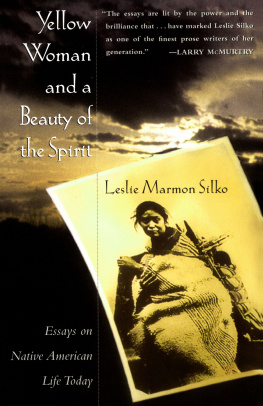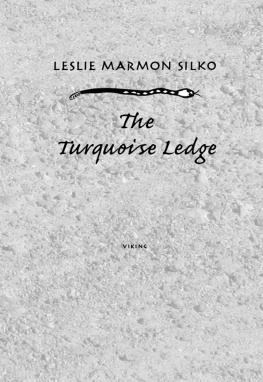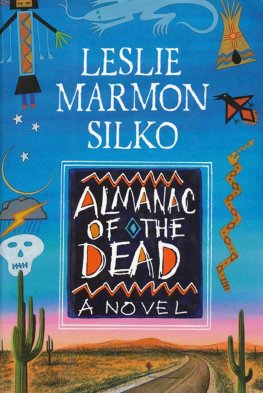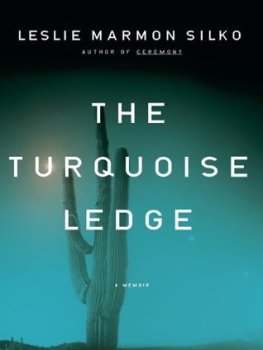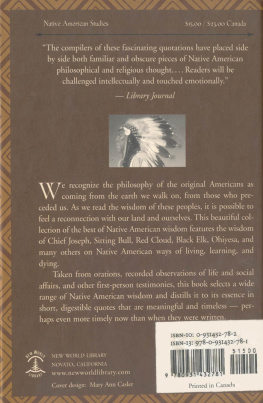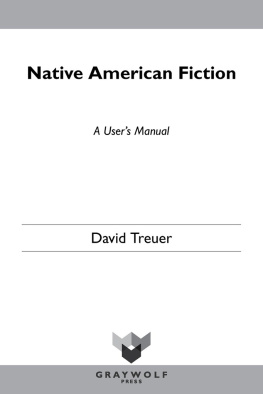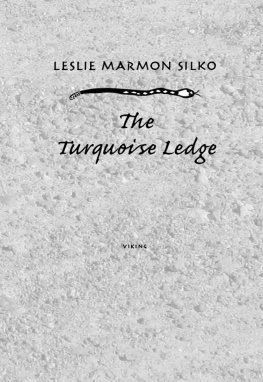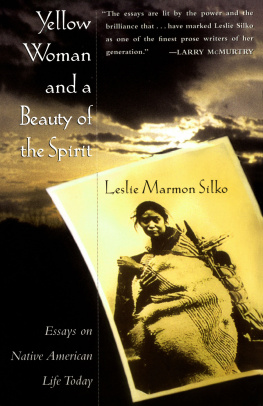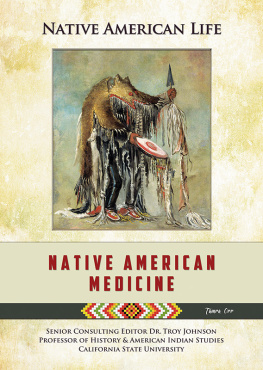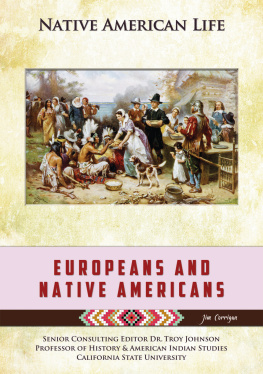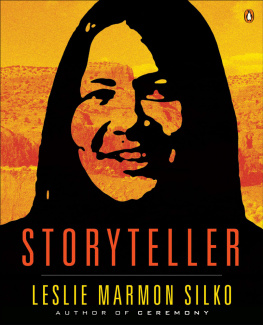Thank you for downloading this Simon & Schuster eBook.
Join our mailing list and get updates on new releases, deals, bonus content and other great books from Simon & Schuster.
C LICK H ERE T O S IGN U P
or visit us online to sign up at
eBookNews.SimonandSchuster.com
Contents

TO
MARY VIRGINIA LESLIE,
MY MOTHER
AND
LELAND HOWARD MARMON,
MY FATHER
Introduction

I N THE EARLY 1980s, as I was beginning to write Almanac of the Dead , I began a series of short prose pieces about the desert area around my house, and about the rocks, and about the rain that is so precious to this land and to my household, which still depends on wells for all its water. In 1980 I had also begun to take photographs of the rocks in the big wash by my house; I used black-and-white and color film, and Polaroid film as well. I began collecting newspaper clippings and magazine articles about rocks that ran amok, and about meteorites that fell through roofs. I began to save articles about rain, about the El Nio weather systems that cause floods in some areas and droughts in others. I began assembling piles of notes I had made on rocks and on rain. I intended to write two long essays, one on rain and one on rocks.
I have continued to gather and hoard piles of notes and articles for my essays. I imagined my essays as perfect pieces, and I did not want to hurry them. I set the notes and incomplete essays aside while I completed Almanac . I recall a section of the novel in which there are descriptions of the peculiar rocks in the Tucson Mountains, and another in which meteorites are a central focus.
But in the meantime, I got requests to write essays, and sometimes, if the topic interested me, I would agree. Later, as I toiled over bland prose and argued with magazine editors, I would regret that I had ever agreed to write nonfiction, and I would swear off nonfiction prose forever. But secretly I hoped that the struggle with these other pieces of nonfiction would empower me to bring forth my essays on rain and on rocks. Instead, the writing of these other essays has had an unexpected effect on my essays about rain and about rocks, as you will see in the last section of this book.
In my 1993 self-published book, Sacred Water , photocopies of my photographs of clouds and dry washes are integral to the text: the images are as much a part of my essay on water as are the words. The Pueblo people have always connected certain stories with certain locations; it is these places that give the narratives such resonance over the centuries. The Pueblo people and the land and the stories are inseparable. In the creation of the text itself, I see no reason to separate visual images from written words that are visual images themselves.
As I learned more about the ancient folding books of the Maya, Aztec, and other indigenous American cultures, I began to think more about the written word as a picture of the spoken word. I began to contemplate writing an essay in which the written words depended upon visual images, or pictures, to fully express what I had to say.
Grandma Lily kept a tall Hopi basket full of old family snapshots. Sometimes we did not move the Hopi basket for months, but then Grandpa Hank or Grandma Lily would be talking about someone or about something that had happened a long time ago, and down came the Hopi basket, full to the top with old black-and-white and even a few sepia photographs. We children would look intently at the faces, study the clothing, and always we looked for any indication of landscape to tell us if the photograph was taken around Laguna. The hills in the background remained the same, and even as a child I was thrilled with that notionthe donkey and horses and wagons and the people dressed so oddly all had changed, but Beacon Hill and Pa'toe'che remained the same.
When I was four years old I began to climb over the fence and leave the yard where I was supposed to stay. Our house was at the bottom of the hill, by the road everyone took to the post office and store. I watched for people to pass by and I would talk to them; the older kids would tell me all kinds of wild stories because I believed what they told me and I got so excited. I could hear the drumming from the plaza whenever there were ceremonial dances, and I always wanted to go because everyone was gathered around the plaza and the dancers were so powerful to watch.
One day the older kids told me that there were special dancers up at the plaza, and these dancers ate wood. I still remember climbing over the fence, because it was a four-foot-high fence but the wire had good spaces to put my feet. I walked quite a distance before Marsalina Thompson saw me. In those days, everyone watched out for everyone else's children, especially the little ones. Marsalina saw me and she knew that I wasn't supposed to be marching along by myself, so she brought me home. I cried and cried and tried to tell her that I must get to the plaza to see the amazing dancers who ate wood, but she was firm.
I was never afraid to go anywhere around Laguna when I was growing up. I was never afraid of any person unless the person was an outsider. Outsiders were white people, mostly tourists who drove up and did not stay long. But up in the sandhills and among the sandstone formations around Laguna, I did not see many Laguna people either, only people cutting wood or returning from their sheep camp. Up in the hills with the birds and animals and my horse, I felt absolutely safe; I knew outsiders and kidnappers stayed out of the hills. I spent hours and hours alone in the hills southeast of Laguna. After I got my beloved horse, Joey, and before I had to work so much at my grandpa's store, I often spent all day on my horse, riding all around old Laguna. The old folks who did not know my name would refer to me as the little girl on the horse. I was perfectly happy, lost in my thoughts and imagination as I rode my horse.
Sometimes I stopped, tied up my horse, and investigated interesting petroglyphs on sandstone cliffs or searched for arrowheads in the ruins of older settlements. I preferred to be without human companions so I could give my complete attention to the hills. Of course, from the time I can remember, I preferred to play alone with my little figures of farm animals, cowboys, and Indians because I liked to make up elaborate dramas in which I whispered what each of the characters was saying; the presence of my sisters and other playmates inhibited these dramas. I was a tomboy who liked to climb cottonwood trees and wade in the river. For real adventure I used to tag along with Gary Fernandez, who was my age, and we would try to keep up with Gary's older brother Ron and his pal Mike Trujillo. The older boys would let us follow for a while before they ditched us.
Because our family was such a mixture of Indian, Mexican, and white, I was acutely aware of the inherent conflicts between Indian and white, old-time beliefs and Christianity. But from the start, I had no use for Christianity because the Christians made up such terrible lies about Indian people that it was clear to me they would lie about other matters also. My beloved Grandma A'mooh was a devout Presbyterian, but I can remember, even as a little girl, listening to her read from the Bible and thinking, I love her with all my heart, but I don't believe in the Bible. I spent time with Aunt Susie and with Grandpa Hank, who was not a Christian. The mesas and hills loved me; the Bible meant punishment. Life at Laguna for me was a daily balancing act of Laguna beliefs and Laguna ways and the ways of the outsiders. No wonder I preferred to wander in the hills by myself, on my horse, Joey, with Bulls-eye, my dog.
Next page
